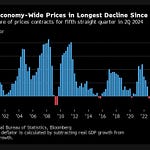TL;DR: The Loafers Lodge fire has exposed the extent of Aotearoa’s housing and poverty crises, just days before the Labour Government will unveil yet another ‘no-frills’, ‘just the basics’ and ‘bread and butter’ Budget aimed at keeping interest rates low and asset values high, rather than investing heavily to solve these twin crises.
Speaking on the eve of tomorrow’s Budget, Finance Minister Grant Robertson again emphasised his fifth Budget would continue to ‘strike a balance’ that prioritises low public debt and low taxes over the massive inter-generational investment needed to both rectify past under-investment that caused the crises, and to cope with population growth now running four times faster than our infrastructure planners are assuming. That choice to reduce debt, rather than invest, has already handicapped efforts to increase the housing supply.
Kāinga Ora, for example, revealed in a Cabinet paper from June last year that it had suspended plans to add net extra social housing after the middle of next year because it was unfunded. It quietly decided that it would sell its new builds into the private market after 2024 and had reversed plans for ‘whole of house’ heating and had stopped retro-fitting existing state houses for people with disabilities to save money.
Robertson said in his pre-Budget speech last week Aotearoa cannot afford the $220 billion of infrastructure investment needed to deal with past and forecast population growth of 0.5%. But he told me in a news conference on Friday the current investment plans and self-imposed rules to keep net public debt below 30% of GDP and to press down Government spending and taxes down towards 30% of GDP could handle population growth of around 2.4%.
The two statements are not compatible, in my view. The audio of our exchanges on these issues of infrastructure, debt, tax levels and migration is in the podcast above.
I argue below and in the podcast above this idea shared by both Labour and National that somehow New Zealand can fix our housing, poverty and climate crises and have the fastest population growth in the developed world, while also keeping taxes and public debt low, is magical thinking that is not sustainable.
Something or someone is going to crack, or escape, or fail, if they haven’t already. We are already seeing it with the exodus of staff from a burnt-out and collapsing health system, along with stressed renters moving to Australia for much-higher disposable incomes after rent and better prospects to buy a home. We are seeing it in the drip-drip-drip of official reports, surveys and advice that we are failing our most vulnerable people and our environment, including one just yesterday on the health of our children.
We saw it yesterday morning when a building designed as an office and converted into 94 rooms, most of which don’t have cooking facilities or bathrooms, caught fire and killed at least six residents. There are 11 more missing.
"I was on the top floor and I couldn't go through the hallway because there was just too much smoke so I jumped out the window.
"It was just scary, it was really scary, but I knew I had to jump out the window or just burn inside the building." Loafers Lodge resident Tala Sili via RNZ
Usually at this point in the email I insert a paywall, but have decided to open it up fully to the public and free subscribers immediately for listening, reading and sharing, given the public interest involved. I thank paying subscribers for their permission in advance and would welcome more paying supporters so I can keep doing this sort of public interest journalism on housing unaffordability, climate change inaction and poverty reduction.
Business as usual budgeting for an inter-generational polycrisis
So far, the response in real financial terms by the Government is business as usual: investigate the individual disaster, change some regulations and blame the residents and/or the landlord. I asked Robertson this morning if the Government was building enough social housing and whether it planned to ramp up investment dramatically in the Budget. He acknowledged it was not enough and said we should wait for the Budget. I don’t expect any increase in social housing investment beyond Kainga Ora’s plan to build a net extra 11,780 homes between 2018 and 2024 — of which it reported it had delivered 6,401 by the end of December.
Kāinga Ora currently has no funding to build more new homes from 2024 and Kainga Ora said in this June 17, 2022 Cabinet paper on its financial sustainability that it assumed it would not be building net extra homes from next year, because of increased construction costs and higher interest rates. It would instead focus on renewing its existing stock, unless it was given extra funding in the Budget 2023 funding round. We will see tomorrow if that suspension is confirmed. I asked Housing Minister Megan Woods about this and she declined to answer, pointing to the need to wait for the Budget.
Here’s the Kāinga Ora comments in the Cabinet paper (bolding mine):
“Our 2022-2026 budget sets a baseline for the organisation incorporating our existing commitments around: growth of approximately 6,000 net additional homes in FY23 and FY24 and nil growth thereafter reflecting current government budget commitments to public housing growth.”
“With Government commitment to funding new public homes currently ceasing in FY24, as a Board we currently are unable to commit to growth beyond this point. As such our 2022-26 budget modelling switches the capacity we have built in the market to a renewal, rather than growth, focus post FY24.
“On the basis that we currently have no access to funding for additional public
housing post FY24, to offset home and land packages we may acquire (through the
replace programme) or additional homes created through uplifts in density (through
the redevelopment programme), our budget also reflects the sale of ~24,500 homes
to the market including:“High-value homes with limited redevelopment potential. Existing older homes.
This would mean that while there will be a net-zero impact on public housing
numbers, there will be a net increase in housing overall for New Zealand. There is
also an opportunity that some of these older homes could be released as an affordable housing product.“The approach we have taken to renewal in the budget is necessary from an
organisational perspective, as with lead-in times for our more complex projects of
two or more years we are already starting to see projects for post FY24 coming
through for approval, and without this or a commitment to growth we would need to consider dialling back capacity.“This approach also means the organisation will be able to respond more quickly
should funding be provided post FY24 for public housing growth (i.e. we will be able to quickly dial back proposed sales programmes which will offset growth under a renewal approach). Your support to get certainty on public housing growth
expectations through Budget 23 will be necessary for us to be able to readjust our
approach.” Kainga Ora in a June 17, 2022 cabinet paper
What the Loafers Lodge fire says about Aotearoa
Very early yesterday morning, more than 90 of Wellington’s most vulnerable people had to scramble, crawl and jump for their lives to get out of an office building converted to rooms for rent at up to $240 a week, some without windows, and none with sprinklers. At least six, and possibly as many as 11 more, died trying to get out of a building on fire, clogged with smoke, and yet given a building warrant of fitness two months ago.
People who are mentally ill, homeless, alone, unemployed, on probation, under community orders and often estranged from whanau and friends. Some were Filipino nurses on temporary work visas and unable to find a proper home. Some were ‘501s’ living in rooms being paid for by the state, wrenched from whatever familial support they might have had in Australia and distrusted and despised here.
These are the people who keep falling off the edge of the public gaze in our political economy, pushed out to the homeless, chronically ill and vagrant margins of society by just-as-chronic housing shortages, a stressed-to-breaking-point health system and little-to-no disposable income.
"I've lived at Loafers for three years. That fire alarm has been going off for three years, at 12am, 3am, 5 in the morning and we ignore it." Loafers Lodge resident Aiden Tavendale via NewstalkZB
"There was a fire alarm went off at 12, and they go off all the time, usually it's a false alarm, somebody cooking toast or something.
"I actually went out on the balcony for that one because I've evacuated the building so many times for alarms, go outside, usually have a cigarette, two minutes later they usually get turned off. But then an hour later the alarm went off again and I wasn't going to leave my room but I though oh well, I'm watching my phone so I'll go and have a cigarette.
"When I left my room I could smell smoke in the hallway so I went to towards the kitchen and yeah, there was smoke coming down the stairwell so I just sort of lapped around our floor knocking on doors saying 'Everyone out, this one's real'." Loafers Lodge resident Simon Hanify via 1News
Last night the survivors of the fire slept in shelters, motels and in marae, if they slept. All their belongings are gone. They are there because our country has:
built the fewest new homes for every 1,000 new residents in the world in the last 30 years; (See charts below)
had the fastest rise in real residential land values in the world, along with the most expensive rents and homes relative to incomes in the world; (See charts below)
the highest proportion of stressed renters in the world, with just over a quarter of renters paying more than 40% of their disposable income on rent (Stats NZ);
24,030 households on the housing register for social housing, more than quadruple the numbers registered as needing housing in 2017, and including 2,165 on the register in Wellington (HUD);
state spending on housing subsidies of $4 billion per year, including $1.2 billion on state housing subsidies, $2 billion on the Accommodation Supplement and $800 million on emergency special needs grants to pay for people to stay in motels and boarding houses (HUD);
430,000 households receiving so little income for such high rents that they need the support of the Government in the form of the Accomodation Supplement and special housing needs grants (HUD); and,
480,104 households who needed to use food banks in March, up 165% from pre-Covid levels (NZ Food Network)
Twin crises laid bare
This is a moment when Aotearoa can see the results of our twin housing and poverty crises in the starkest and most brutal light. Politicians yesterday agreed on the need for inquiries into the fire and building standards, but the bigger question is whether this moment of clarity lasts and makes any difference. I personally doubt it.
They’re not median voters and have no public voice, so they can be ignored once the spotlight has shifted. They can and are often blamed for and sanctioned into living in this situation, with some politicians focused until yesterday on cutting their benefits and restricting their access to housing while charging them to get their medicines. The current Government has repeatedly ignored official advice to remove benefit sanctions, increase benefits by much more than they have done and to build much, much more social housing. Every time, it has said no because to do other wise would lead to a higher net debt trajectory and slightly higher interest rates, and therefore slightly lower residential land values.
Just after 2pm tomorrow, we’ll open up another ‘business as usual’, ‘bread and butter’, and ‘just the basics’ Budget that is focused on cutting down the size of publicly-provided services as a share of the economy to ensure there’s room for more tax cuts and to keep public debt and interest rates low. Budget 2023, promoted as a ‘no frills’ document, is already printed.
Making choices to keep the status quo
PM Chris Hipkins and Finance Minister Grant Robertson decided months ago on this approach, in line with years of adherence to the default long-run fiscal settings of low-public-debt-before-everything-else. They were egged on by an Opposition baying for less Government borrowing, lower mortgage rates and fiscal room for tax cuts that will help those on middle to higher incomes the most.
Yet 10% of our population are so poor and stressed they can’t afford a place to live or food to eat without Government help to pay their rent or food parcels donated from leftovers being thrown out by supermarkets.
This is a country with net household wealth of $2.25 trillion, which is $450,200 per person. How can 90% think it’s ok for 10% of our people to be so poor they can’t afford a place to live or enough food to eat?
The charts that show how exceptional New Zealand is

Housing waiting list almost quintuples in five years
House values and rents rose much faster than incomes
Kind regards
Bernard














Share this post